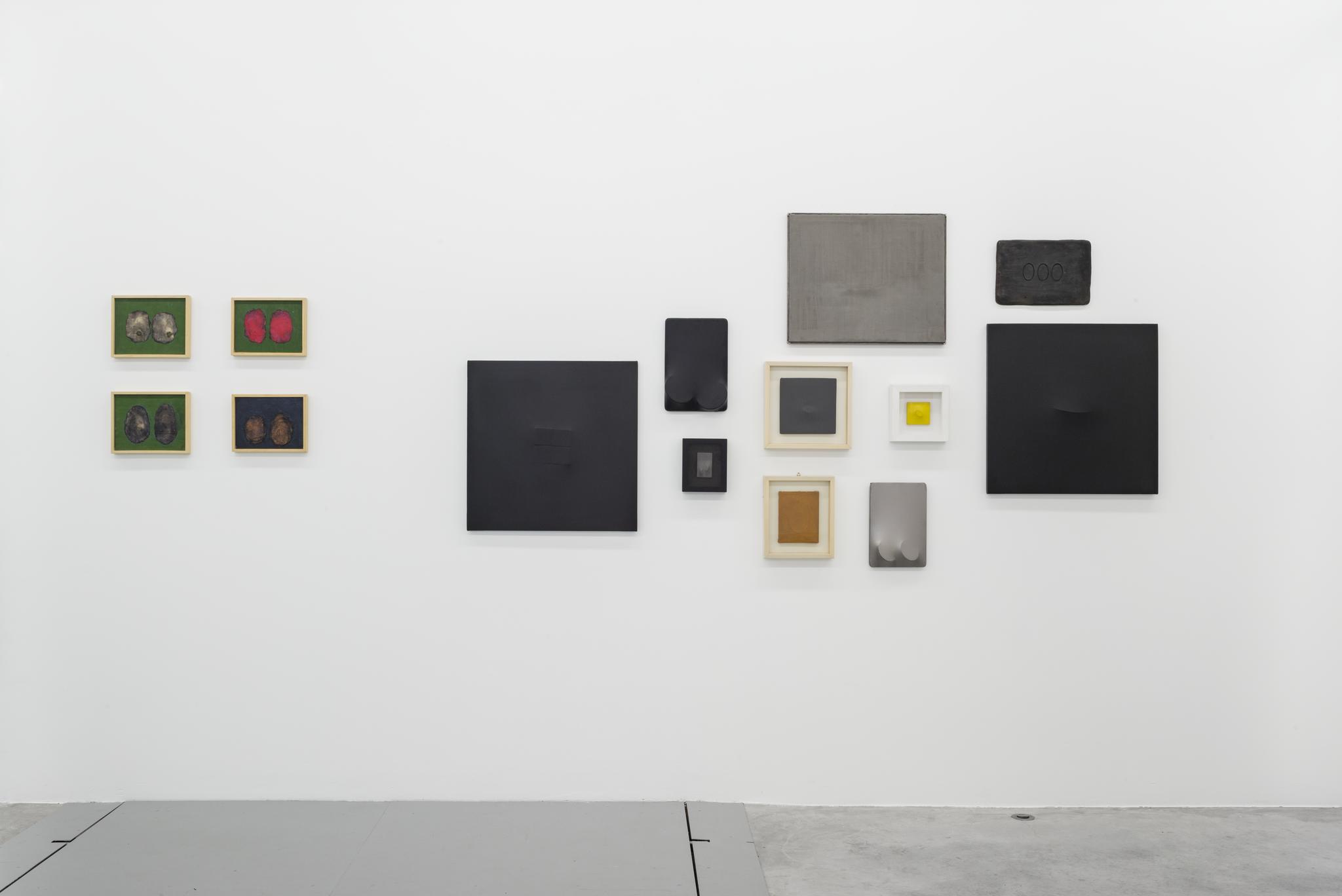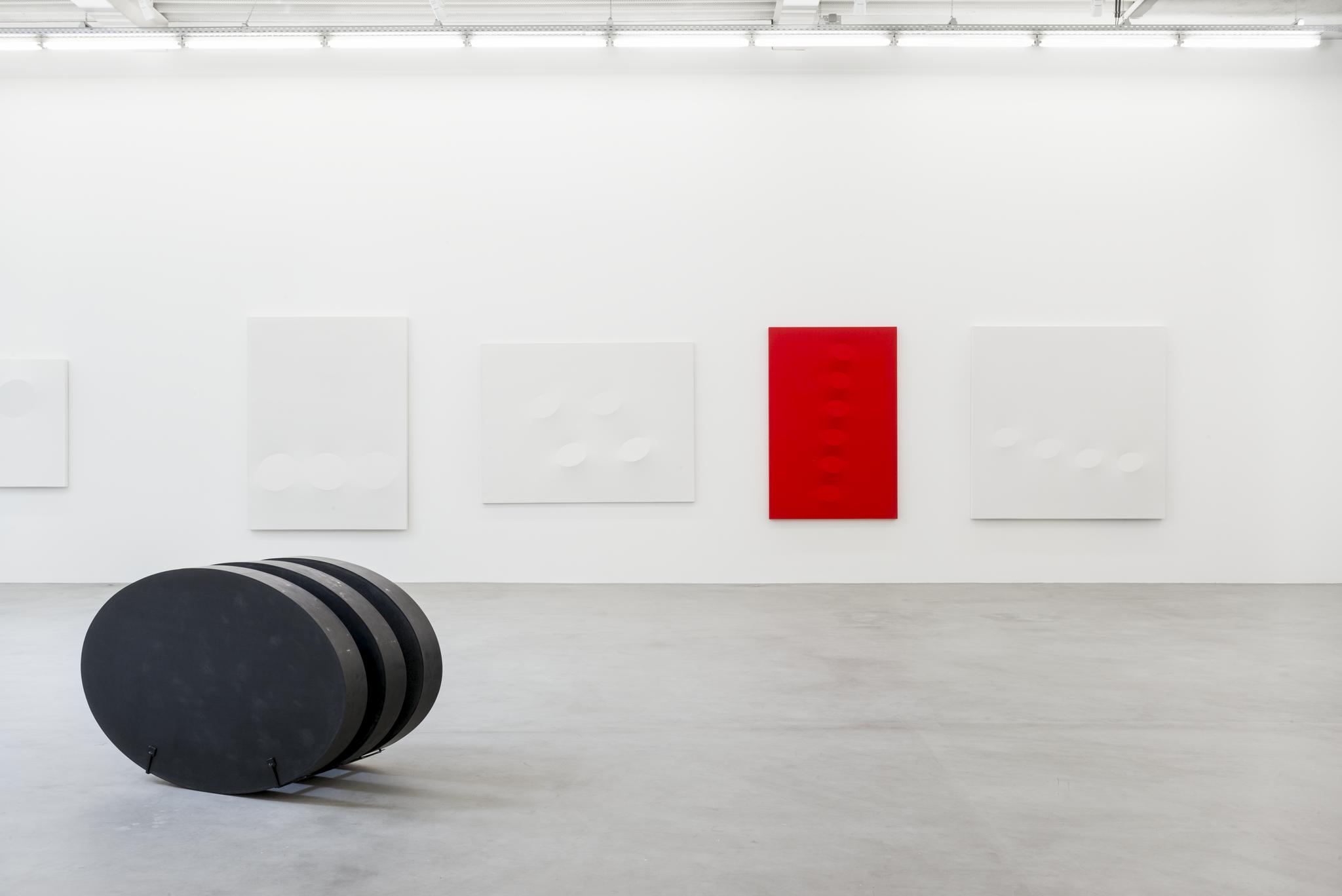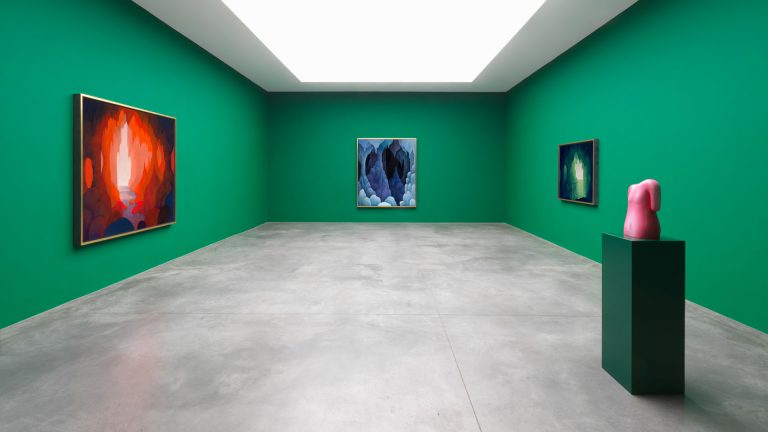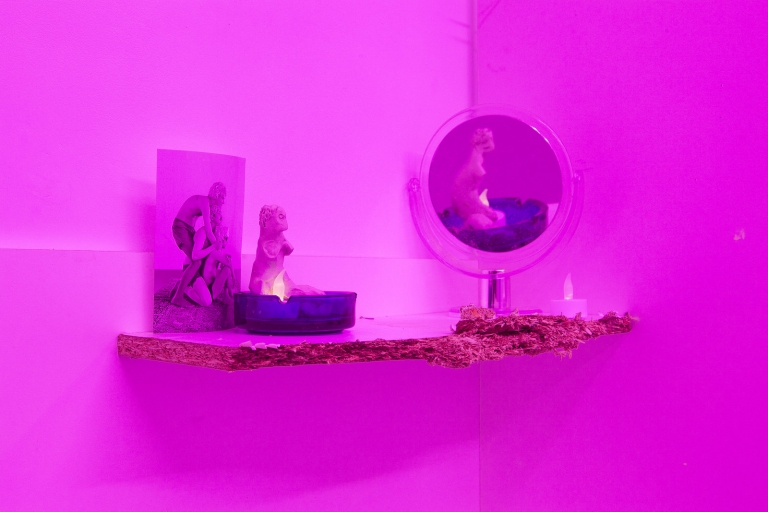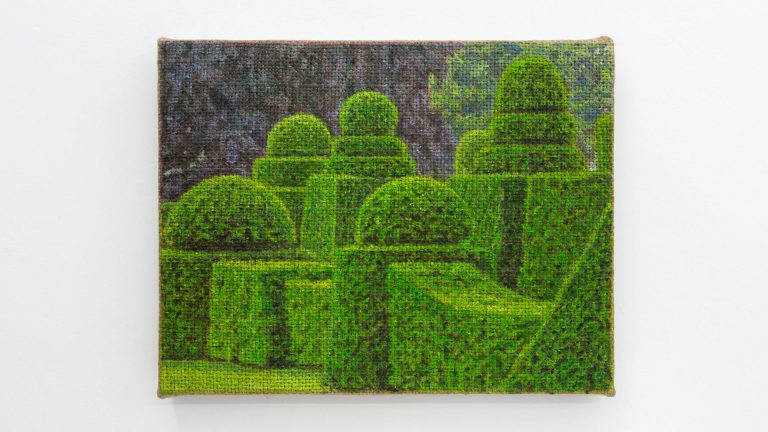Artist: Turi Simeti
Exhibition title: Le Choix du Signe
Curated by: Natacha Carron
Venue: Almine Rech Gallery, Brussels, Belgium
Date: May 25 – July 25, 2015
Photography: images courtesy of the artist and Almine Rech Gallery, Brussels
Turi Simeti’s exhibition at Almine Rech Gallery on May 28 gathers for the first time a series of pieces that provide an overall perspective of the artist’s work from his beginnings to the present. Some of the pieces come from his personal collection and were until now unknown to the public. The art scene of the early 1960s fits into a context of alternative and vivid search. Milan gave Simeti the means to enrich his work with influences from the greatest European artists of the period. In this context, the New York art world flew to Milan, which became the place to be for those who wanted to witness the European avant-garde.
In a cabinet of curiosities, we find a mix of rare objects hanging. This seemingly messy collection embodies Simeti’s commitment and his esthetic search. His burned envelopes, reduced to their simplest expression, made appear an uncommon shape: the oval.
We rediscovered this shape that threatened to push the fabric out of the canvas. In other words, the oval seems to burst out of canvas to escape into infinity. These little canvases of the cabinet of curiosities move and seem to be following their own laws. They clearly appear to be inspired by the creative force of the 60s. In his 1962 piece “108 ovali neri“, the oval becomes a pattern and it is repeated on the canvas several times, filling it completely.
The exhibition is however centered on the disappearance of the oval. As Milan artists searched the opposites and the absence, Simeti joined them and overthrew the oval, causing it to “disappear”. Nevertheless, the shape re-emerges on the back of the canvas. The tension created by the oval is the defining element of the spatial experiment in the exhibition.
Turi Simeti creates different types of tension on several formats mixing small-scale canvases that produce startling dimensions. The architectural construction of the canvas becomes more complex and it is divided into diptychs and polyptychs, depending on the elements involved. The extroflexion allows Simeti to draw on the surface of the canvas according to the tension and the angle. As a result, a plain shape appears in the form of an elliptic conical section and an edge is outlined, creating a slight angle on the canvas. With the oval, Turi Simeti attempts to develop an irregular writing system that liberates the surface of the canvas from any kind of materiality, allowing nothing but silence.
Yet, that silence is only a phase in Simeti’s path. In 1971, in a radical move, he brutally broke a whole glider into pieces in La Bertesca gallery in Genoa. Today, there is only a set of containers, on show for the first time, that give evidence of Simeti’s affiliation to the particular category of artists who became well-known in Europe in the 60s and were motivated by the desire to rebuild the world. The “Distruzione di un aliante” (the destruction of a glider) has its origins in a context dominated by Fluxus and the New Realists, heirs of the Dada movement. This approach places daily life into the art scene and blurs the lines between life and art. The destruction of the glider expresses the urgency to create something new all over again. The exhibition is driven by these instinctive dynamics, the artistic and political determination to start from scratch.
-Natacha Carron





